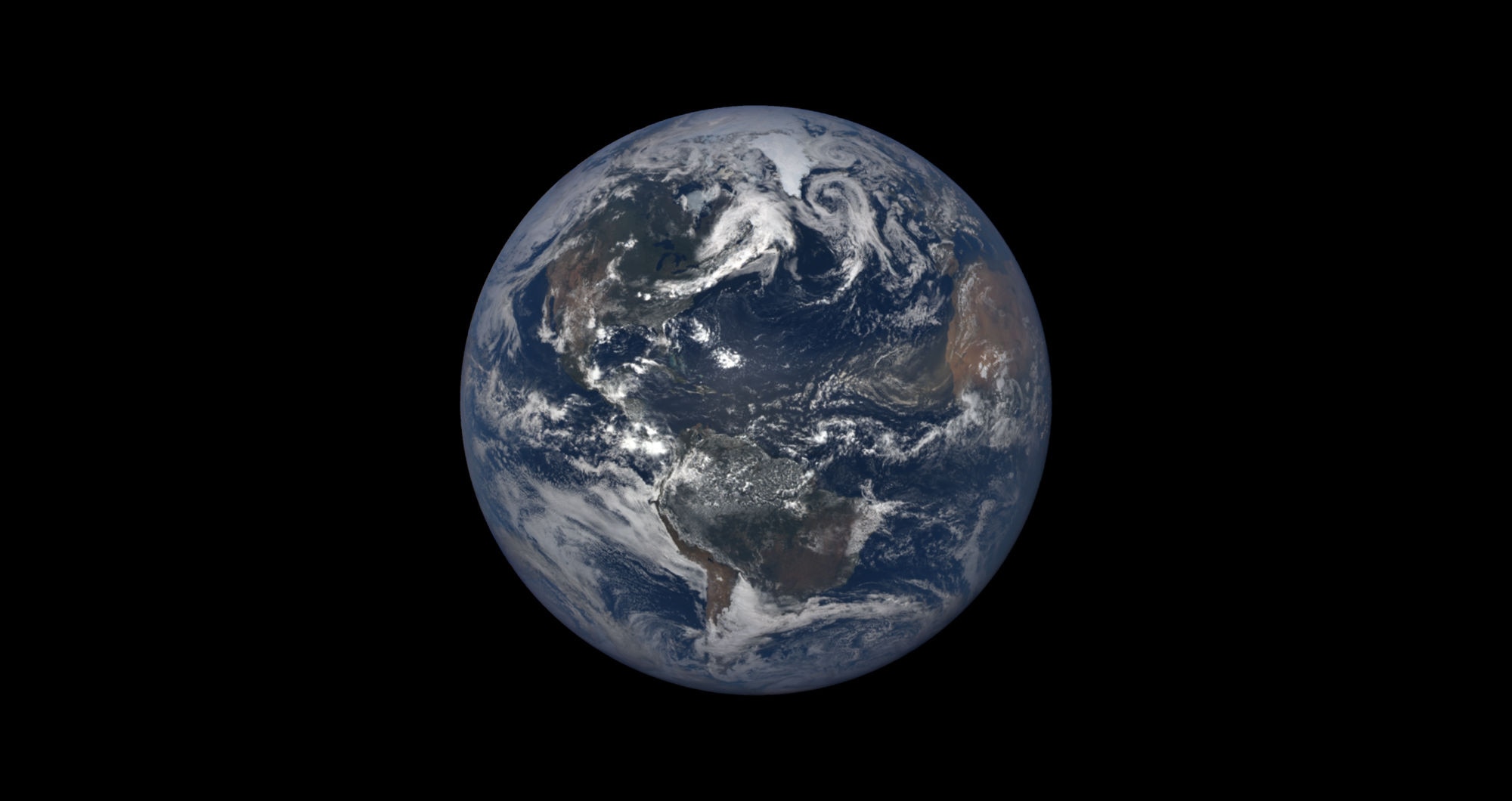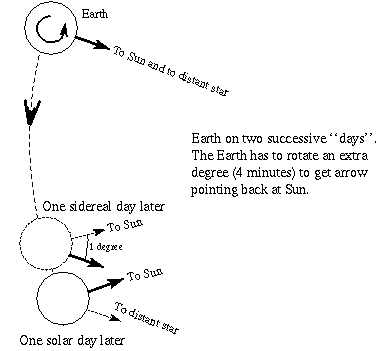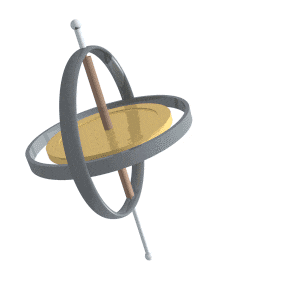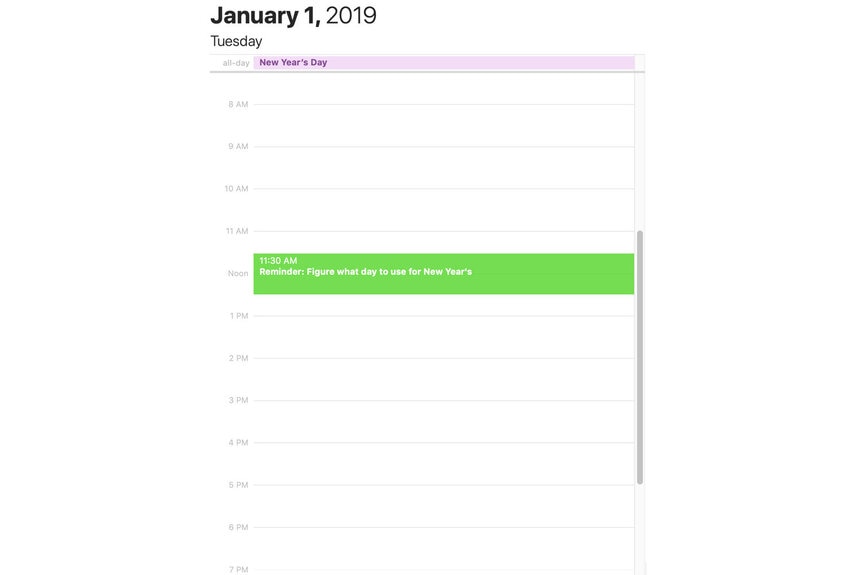Create a free profile to get unlimited access to exclusive videos, sweepstakes, and more!
Happy New Year 2019! ... but what exactly is a 'year'?

[Note: Another circuit around the Sun, another repost: The article below is an updated version of one I put up on semi-random January 1sts, because if the Earth can reuse the same orbit every year then I can reuse this. Bear in mind the influence of the other planets' gravity changes Earth's orbit subtly over time, so each orbit is ever so slightly different than the last. Therefore I also feel I can poke and prod the odd word or two here in this article, altering its course just a tad even while the overall trajectory remains the same. Take a lesson from the Universe! That's a pretty good New Year's resolution.]
Yay! It's a new year!
But what does that mean, exactly?
The year, of course, is the time it takes for the Earth to go around the Sun, right? Well, not exactly. It depends on what you mean by "year" and how you measure it. This takes a wee bit of explaining, so if you're not nursing too big a 2018 hangover (whether alcohol-induced or from, y'know, <waves vaguely at entire planet>), then start off your 2019 with the best things in life: astronomy and math.
Round and Round She Goes
Let's take a look at the Earth from a distance. From our imaginary point in space, high above the Earth's orbital plane, we look down and see our fair planet and the Sun. The Earth is moving, orbiting the Sun. Of course it is, you think to yourself (unless you're a Geocentrist, in which case this stuff still all works, just the other way around... and free advice: You should also probably open your mind to other frames of reference). But how do you measure that? For something to be moving, it has to be moving relative to something else. What can we use as a yardstick against which to measure the Earth's motion?
Well, we might notice as we float in space that we are surrounded by billions of pretty stars. We can use them! So we mark the position of the Earth and Sun using the stars as benchmarks, and then watch and wait. Some time later, the Earth has moved in a big circle (OK, ellipse, but they're pretty close in this case) and is back to where it started in reference to those stars. That's called a "sidereal year" (sidus is the Latin word for star). So how long did that take?
Let's say we used a stopwatch to measure the elapsed time. You'll find that it took the Earth 31,558,149 seconds (some people (me!) like to approximate that as π x 10 million = 31,415,926 seconds, which is an easy way to be pretty dang close—better than a half a percent accuracy). That's an inconvenient number of seconds, though. I think we'd all prefer to use days instead. So how many days is that?
Well, that's a second complication. A "day" is how long it takes the Earth to rotate once, but we're back to that measurement problem again. But hey, we used the stars once, so let's do it again! You stand on the Earth and define a day as the time it takes for a star to go from directly overhead to directly overhead again: a sidereal day. That takes 23 hours 56 minutes 4 seconds = 86,164 seconds. But wait a (sidereal) second — shouldn't that be exactly equal to 24 hours? What happened to those 3 minutes and 56 seconds?
I was afraid you'd ask that. But this turns out to be important.
It's because the 24-hour day is based on the motion of the Sun in the sky, and not the stars. During the course of that almost-but-not-quite 24-hour day, the Earth was busily orbiting the Sun, so it moved a little bit of the way around its orbit (about a degree: 360° / 365 (or so) days is about 1° per day). If you measure the time it takes the Sun to go around the sky once — a solar day — that takes 24 hours, or 86,400 seconds. It's longer than a sidereal day because the Earth has moved a bit around the Sun during that day, and it takes a few extra minutes for the Earth to spin a little bit more to "catch up" to the Sun's position in the sky.
A diagram from Nick Strobel's fine site Astronomy Notes (above) helps explain this. See how the Earth has to spin a little bit longer to get the Sun in the same part of the sky? That extra 3 minutes and 56 seconds is the difference between a solar and sidereal day.
OK, so we have a sidereal year of 31,558,149 seconds. If we divide that by 86,164 seconds/ sidereal day we get 366.256 days per year.
Hey, wait, that doesn't sound right. You've always read it's 365.25 days per year, right? Well, that first number, 366.256, is a year in sidereal days. In solar days, you divide the seconds in a year by 86,400 seconds in a solar day to get 365.256 days in a year.
Phew! That number sounds right. But really, both numbers are right. It just depends on what unit you use. It's like saying something is 1 inch long, and it's also 2.54 centimeters long. Both are correct.
But wait! I lied to you!
Well, kinda. That 365.25 number isn't, um, actually correct. It's a cheat. That's the number you get using 24 hours per day, but that's the length of an average (or what astronomers call the mean) solar day. The Earth orbits the Sun on an ellipse, and when it's closer to the Sun it moves faster, and when it's farther it moves slower. That changes how fast the Sun appears to move in the sky, so in reality every solar day has a slightly different length! That's why we use a mean solar day, averaging up all the slightly different solar days over the course of a year. This stuff is hard enough without having to define 365 (and a fraction) individual solar days.
The Sun Rose by Any Other Name
Confused yet? Yeah, I get that. It's hard to keep all this straight. Still, let's get back to the year: That year that we measured was a sidereal year. But it turns out that's not the only way to measure a year.
You could, for example, measure it from the exact moment of the March equinox (also northernhemispherictically sometimes called the vernal equinox, a specific time of the year when, if you're standing on the Earth's equator, the Sun passes directly overhead) in one year to that same March equinoctal moment in the next. That's called a tropical year (which is 31,556,941 seconds long). But why the heck would you want to use that? Ah, because of an interesting problem! Here's a hint:
A spinning object like a gyroscope will wobble if you apply an off-axis force on it (like friction with the surface it sits on). This cyclic wobble is called precession, and the Earth does it, too! In our case the force is the gravity of the Moon and Sun, which tug on the Earth. The Earth's precession takes about 26,000 years to complete one cycle, so the direction the Earth's axis points in space changes slowly over time. Right now, the Earth's axis points pretty close to the star Polaris, but in a few hundred years it'll be noticeably off from Polaris.
Remember, too, that our seasons depend on the Earth's tilt. Because of this slow wobble, the tropical year (from season to season) does not precisely match the sidereal year (using stars). The tropical year is a wee bit shorter, by 21 minutes or so. If we didn't account for this, then every year the seasons would come 21 minutes earlier. That doesn't sound like much, but it adds up! If we didn't compensate, eventually we'd have winter in August, and summer in December. That's fine if you're in Australia, but in the Northern Hemisphere this would cause panic, rioting, snarky comments on Twitter, and perhaps worse.
So how do you account for this difference and not let the time of the seasons wander all over the calendar? Easy: You adopt the tropical year as your standard year. Done! You have to pick some way to measure a year, so why not the one that keeps the seasons more or less where they are now? This means that the apparent times of the rising and setting of stars changes over time, but really, astronomers are the only ones who care about that, and, not to self-aggrandize too much, they're a smart bunch. They know how to compensate.
OK, so where were we? Oh yeah — our standard year (also called a Gregorian year) is the tropical year, and it's made up of 365.25 mean solar days (most of the time, actually), each of which is 86,400 seconds long, pretty much just as you've always been taught. And this way, the March equinox always happens on or around March 21 every year.
Of course, you have to occasionally tweak the calendar with leap days (and sometimes leave them out to make it work even better), but that's a topic for another post.
Lend Me Your Year
But there are other "years," too. The Earth orbits the Sun in an ellipse, remember. When it's closest to the Sun we call that perihelion (the farthest point is called aphelion). If you measure the year from perihelion to perihelion (called an anomalistic year, an old term used to describe the shape of an orbit), you get yet a different number! That's because the orientation of the Earth's orbital ellipse (think of it as the direction in space the long axis of the ellipse points along) changes due to the tugs of gravity from the other planets, taking about 100,000 years for the ellipse to rotate once relative to the stars. Also, it's not a smooth effect, since the positions of the planets change, sometimes tugging on us harder, sometimes not as hard. The average length of the anomalistic year is 31,558,432 seconds, or 365.26 days. That's about 283 seconds (4 minutes 43 seconds) longer than a sidereal year.
Let's see, what else? Well, there's a pile of years based on the Moon, too, and the Sun's position relative to it. There are ideal years, using pure math with simplified inputs (like a massless planet with no other planets in the solar system prodding it). There's also the Julian year, which is an ideally defined year of 365.25 days (those would be the 86,400 seconds-long solar days). Astronomers actually use this because it makes it easier to calculate the times between two events separated by many years. I used them in my Ph.D. research because I was watching an object fade away over several years, and it made life a lot easier. Doctoral research is tiresomely hard, shockingly, so you learn to take any advantages you can find.
Where to Start?
One more thing. We have all these different years and decided to adopt the tropical year for our calendars, which is all well and good. But here's an issue: Where do we start it?
After all, the Earth's orbit is an ellipse with no start or finish. It just keeps on keeping on. But there are some points in the orbit that are special, and we could use them. For example, as I mentioned above, we could use perihelion, when the Earth is closest to the Sun, or maybe the vernal equinox. Those are actual physical events that have a well-defined meaning and time.
The problem, though, is that the calendar year doesn't line up with them well. The date of perihelion changes year to year due to several factors (including, of all things, the Moon, and the fact that we have to add a leap day roughly every four years). In 2019 perihelion is on January 3 at 05:19 UTC, but in 2020 it'll be on January 5 at 07:47 UTC. Same thing with the equinox: It can range from March 19 to March 21. That makes using orbital markers a tough standard.
Various countries used different dates for the beginning of the year. Some had already used Jan. 1 by the time the Gregorian (tropical) calendar was first decreed in 1582, but it took time for others to move to that date. England didn't until 1752, when it passed the Calendar Act. Not surprisingly, there was a lot of religious influence on when to start the new year; for a long time a lot of countries used March 25 as the start of the new year, calling it Lady Day, based on the assumed date when the archangel Gabriel told Mary she would be the mother of God. The dates and traditions of several Christian holidays are actually based on older, Pagan holiday dates, so the fact that this was supposedly on March 25 — so very close to the date of the equinox, which Pagans celebrated —makes me suspicious.
Anyway, in the end, the date to start the new year is an arbitrary choice, and Jan. 1 is as good a day as any (though it being so close to perihelion does have odd effects on the length of the day). And as a happy side effect it does help establish the Knuckle Rule.
Resolving the New Year
So there you go. As usual, astronomers have taken a simple concept like "years" and turned it into a horrifying nightmare of nerdery and math. But really, it's not like we made all this stuff up. The fault literally lies in the stars and not ourselves.
Incidentally, after all this talk of durations and lengths, you might be curious to know just when the Earth reaches perihelion, or when the exact moment of the vernal equinox occurs. If you do, check out the U.S. Naval Observatory and the TimeAndDate websites. They have tons of gory details about this stuff.
And, finally, I have to add one more bit of geekiness, because I love astronomy and math and words. While originally researching all this, I learned a new word! It's nychthemeron, which is the complete cycle of day and night. You and I, in general, would call this a "day." This would be a great superhero name, though what their power would be eludes me. Probably procrastination.
Hmmmm, is there anything else to say here? Let's see... (counting on fingers)... years, days, seconds, yeah, got those. (Mumbling.) Nychthemeron, yeah, Gregorian, tropical, precession, anomalistic…
Oh wait! I know something I forgot to say:































